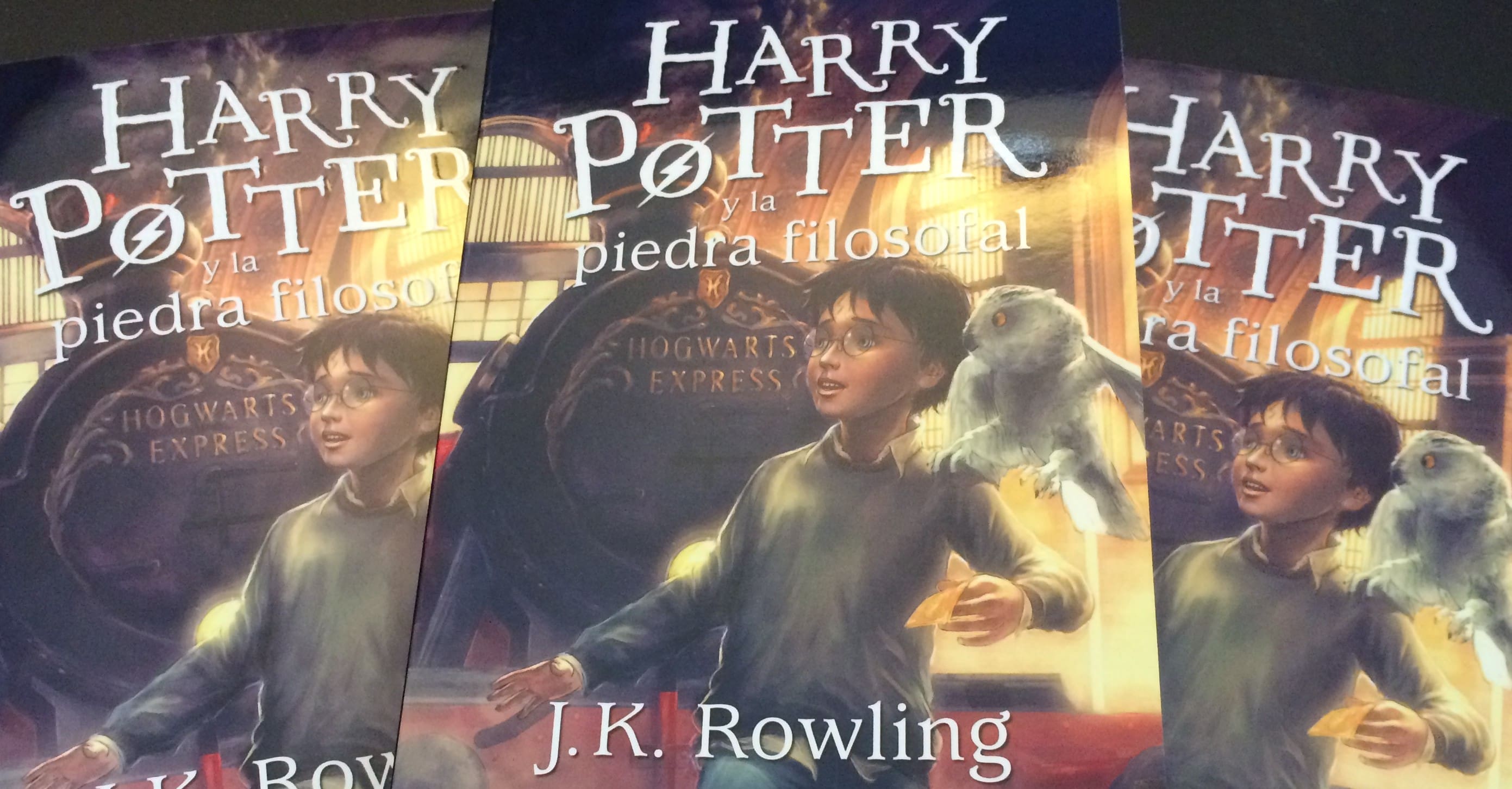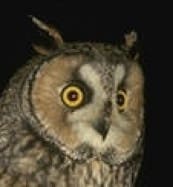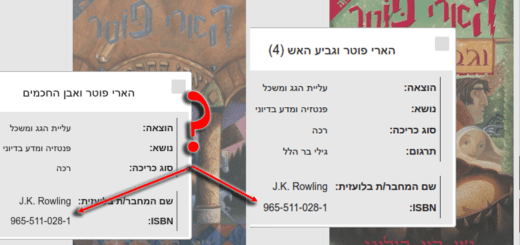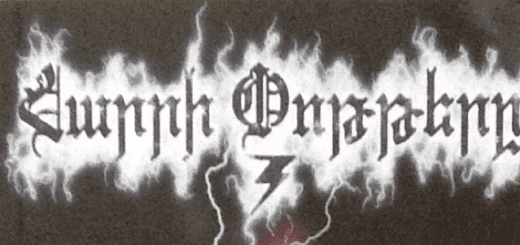 Harry Potter and the Spanish ‘Tykes’
Harry Potter and the Spanish ‘Tykes’
An update to Harry Potter and the Spanish Rabbit Hole
See end of the article for recent updates! 2020-09-28
The amount of variation in the Spanish editions of the Philosopher’s Stone is stunning. Writing is an art and from draft-to-draft, you expect the language to be tweaked. But once it has been edited and published, you don’t expect noticeable variation from edition to edition; maybe just the correction of a typo or two. Similarly, translation is absolutely an art; arguably more difficult and nuanced than just writing by itself. In addition to all the same kind of variation you expect from draft-to-draft, there is also the variation that comes from trying maintain the character and intent of the original. But again, once a translation has been edited and published, you don’t really expect that much variation in the final text from edition to edition. “Expect” is definitely the operative word here. Harry Potter y la Piedra Filosofal is all over the place! I hope that Spanish is unique in this regard because I’m terrified that if I start looking this closely at any of the translations (or the original English editions for that matter!) that I’ll find that Spanish is not the exception!

These are my Spanish ‘Tykes’: Chiquilín, Diablillo, and Pillastre
My goal in digging into these variations was to conclusively say how many regional adaptations of the Spanish translation were published and when. The assumption that it appears everyone has been working from was that there were two regional adaptations: Argentina and Spain. I referred to them as “South American Spanish” and “European Spanish” and expounded on them at length (rather embarassingly now) on Reddit; but in retrospect, this was an assumption of mine that came from a) the fact that I had an edition published in Argentina and another in Spain and b) my past experience regionalizing software where we used two regions. As a collector, regional adaptations are of interest to me, so exactly how many there are is important to my completion criteria!
I have finally collected enough data that I feel comfortable making some concrete assertions. There are three regional adaptations of Spanish:
- Southern Cone (‘Cono Sur’)
- Latin America
- Europe
Furthermore, the original edition of la Piedra Filosofal varies enough from all the subsequent editions, regardless of region, that I think it stands as a distinct linguistic variant in its own right.
Below, I’ll explain how I came to my conclusions, provide a lot of detail what kind of variations exist and tell you how you can determine what regions your own editions belong to. If that’s all you’re really interested in here, you can jump to the “Quick and Dirty Region Identification Rules” or the “Appendix of Editions“.
What We’re Working With and What We’re Looking For
After scouring the Internet, I found evidence of 32 separate editions of la Piedra Filosofal (full list below), two of which I owned. After some initial investigation, I ordered another 4 books, got access to another 10 through other collectors and found a couple more full-texts online: all told, 18 books representing 9 different editions.
The variations that I found fundamentally fall into two categories: regional dialectal variation (the reason for the regional adaptation) or improving the translation over time. As a non-native speaker, the really tricky thing is trying to figure out which is which, particularly when they might be both. To illustrate, let’s look at really clear examples of each.
Regional Variation:
One of the most well-known differences between Spanish as spoken in Spain and Spanish as spoken in the Americas is in the pronoun system. The Spanish 2nd person (“you”), unlike English, further distinguishes between singular vs. plural and familiar vs. polite. That is, there are potentially 4 different words that we would translate to English, “you”. Everywhere, there is a distinction in the singular. In the Americas, the plural has no distinction between familiar and polite and there is only one word ustedes that covers both contexts. However, in Spain, the distinction is maintained and there are two words: vosotros (familiar) and ustedes (polite).
Consequently, the use of vosotros is a very clear indicator of what region a text is intended for. Finding examples is difficult when comparing a bunch of paper books that can’t be searched; however, there is a perfect example in Chapter 4, El guardián de las llaves, “Keeper of the Keys”. Hagrid has just given Harry his Hogwarts letter and in the exchange that follows, Harry is shocked to discover that his aunt and uncle knew about Hogwarts and says one of:
—¿Ustedes sabían? —preguntó Harry—. (Latin America and Southern Cone)
—¿Vosotros lo sabíais? —preguntó Harry—. (Europe)
In the latter, Harry uses vosotros because he’s addressing his aunt and uncle (plural) and he knows them really well (familiar).
Translation Improvement:
It is always difficult to decide whether to and how to translate proper names. The multiple layers of meaning in Harry Potter make it even more so. The “Mirror of Erised” for instance. The translator decided to leave it Erised in Spanish; a common strategy for proper nouns that don’t have good correspondences in the target language. At least, it was Erised at first. Once it became widely know that the “Erised” is “Desire” in reverse, something the translator probably didn’t know originally, that presented a different way to approach the translation of the name. “Desire” in Spanish is deseo, so Oesed becomes a pretty good candidate for translation and that’s what later editions use:
El espejo de Erised
El espejo de Oesed
It’s not clear precisely when that change was made, but as late as 2006-2008 Erised was still being used. By 2014-2015, Oesed replaced it in all the regions. The easiest place to find it is in the title of Chapter 12.
Tawny Owls and Little Tykes
Some of the first variations that started me thinking that there were more than one regional adaptation also turned out to be one of the most misleading. They are the ones that I reported on before but will reiterate here. In Chapter 1, pretty universally on the second page, we have this passage:
None of them noticed a large, tawny owl flutter past the window.
At half past eight, Mr. Dursley picked up his briefcase, pecked
Mrs. Dursley on the cheek, and tried to kiss Dudley good-bye but
missed, because Dudley was now having a tantrum and throwing his
cereal at the walls. “Little tyke,” chortled Mr. Dursley as he left
the house. He got into his car and backed out of number four’s drive.
Looking at the bolded phrases, I observed the following translations.
- “tawny owl”
- lechuza parda “brown owl”
- lechuza rojiza “red owl”
- lechuza leonada “tawny owl”
- búho pardo “brown owl”
The difference between a lechuza and a búho is in the owl family and it is one that we don’t have in English:

Lechuza

Búho
- “Little Tyke”
- Tunante “scamp”
- Diablillo “imp”
- Chiquilín “tiny tot”
- Pillastre “rogue”
- “Chortled”
- dijo “said”
- exclamó “exclaimed”
- rió “laughed”
And then there was “You-know-who”. The first time we encounter this phrase is another couple of pages into Chapter 1:
“Sorry,” he grunted, as the tiny old man stumbled and almost fell. It was a few seconds before Mr. Dursley realized that the man was wearing a violet cloak. He didn’t seem at all upset at being almost knocked to the ground. On the contrary, his face split into a wide smile and he said in a squeaky voice that made passersby stare, “Don’t be sorry, my dear sir, for nothing could upset me today! Rejoice, for You-Know-Who has gone at last! Even Muggles like yourself should be celebrating, this happy, happy day!”
- “You-Know-Who”
- Quien-usted-sabe (Quien-tu-sabes) “who-you-know”
- Innombrable “unnameable”
- Usted-Sabe-Quién (Tú-Sabes-Quién) “you-know-who”
In 1 and 3, the form in the brackets is the familiar form of “you” as discussed above.
Superficially, it looks like there’s three or four possible variations, but they weren’t being used consistently together. Looking at them together there were 6 different combinations of these phrases together. So what gives?? 6 regional variations? Unlikely…
Settling on 3 variations, as I previously reported, came from an extra-linguistic clue: the ISBN numbers of the new illustrated editions. Three sequential ISBNs generally available in three different parts of the world:
- 978-84-9838-707-0 – Spain (only edition available on http://www.libreriauniversitas.es/)
- 978-84-9838-708-7 – Argentina, Chile (http://edhasa.com.ar, http://goldenbook.cl)
- 978-84-9838-709-4 – US, Mexico (http://www.amazon.com, http://librosmexico.mx)
I wasn’t about to get three illustrated versions to prove a point, but there were also three other closely-space ISBNs that corresponded to new Spanish cover art in paperback and showed a similar variation in their regional availability:
- 978-84-9838-631-8 – Spain
- 978-84-9838-656-1 – Argentina
- 978-84-9838-694-3 – US
So, I did buy all of those! Once you have enough data points, the patterns start to emerge. So with regards to these crazy variations in the first couple pages of the books, here’s what I have concluded. The first edition that was printed in Argentina is a complete outlier so let’s separate it out and look at it later (you’ll get an inkling of why I think it deserves it’s own recognition as an interesting variant). Also, some updates were made in the most recent editions, so let’s ignore those for the moment too and just look at editions between ~2000 to ~2012ish. For these editions, three consistent patterns emerge.
| < 2012 | tawny owl | little tyke | chortled | You-Know-Who |
|---|---|---|---|---|
| Latin America | lechuza parda | Diablillo | dijo | Quien-usted-sabe |
| Southern Cone | lechuza rojiza | Chiquilín | exclamó | Innombrable |
| Europe | lechuza parda | Tunante | dijo | Quien-usted-sabe |
For some reason, they decided ~2014 to make a couple of changes, introducing búho for one. But again, looking at these editions in isolation, three consistent patterns emerge.
| > 2014 | tawny owl | little tyke | chortled | You-Know-Who |
|---|---|---|---|---|
| Latin America | lechuza parda | Diablillo | dijo | Quien-usted-sabe |
| Southern Cone | búho pardo | Chiquilín | exclamó | Innombrable |
| Europe | búho pardo | Pillastre | dijo | Quien-usted-sabe |
Google does a pretty good job of giving you quick estimates for word frequency and it seems that búho is about twice as common as lechuza, so that probably is a factor. Also, the connotation for lechuza seems to be whitish snowy owls like Hedwig (try a Google image search!) so, perhaps the tawny/brown/red colour ultimately caused some cognitive dissonance. Although in that case, you might expect that they distinguishing between the two: búho for mundane owls and lechuza for Hedwig? They did not do that. Hedwig is a búho in those editions.
Putting it all together and adding in the outlying first edition:
| tawny owl | little tyke | chortled | You-Know-Who | |
|---|---|---|---|---|
| First Edition (Argentina) | lechuza leonada | Chiquilín | rió | Usted-Sabe-Quién |
| Latin America | lechuza parda | Diablillo | dijo | Quien-usted-sabe |
| Southern Cone < 2012 | lechuza rojiza | Chiquilín | exclamó | Innombrable |
| > 2014 | búho pardo | |||
| Europe < 2012 | lechuza parda | Tunante | dijo | Quien-usted-sabe |
| > 2014 | búho pardo | Pillastre |
I believe that most of the changes between the first edition and the later editions were improvements in the translation. “Tawny” is a pretty infrequent word in English and possibly leonada is even more so, although it is probably a more accurate translation (“tawny” is most commonly used in the context of lions; leonada…) it may be one that is unfamiliar to younger readers. Why is there a regional variation between “brown” and “red”? We’d need a native speaker I think; it seems pretty arbitrary, although it may have to do with people’s interpretation of the actual colour of a lechuza vs a búho in different regions.
Chiquilín is one of the only words I found as specifically flagged as specific to South American Spanish and the other variations seem similarly regional.
“Chortled” seems just not to have a good corresponding word in Spanish which could account for the variation there.
I did find some discussion online about how unnatural “You-Know-Who” sounds in Spanish. The first edition’s translation especially seems to have kept English word-order and it probably was unnatural sounding. Apparently even more so to the Argentinians because they ended up avoiding it all-together!
Some More Random Variation Examples
| beans* | dears* | The Boy Who Lived | The Vanishing Glass | Platform 9 3/4 | trapdoor | |
|---|---|---|---|---|---|---|
| First Edition (Argentina) | grajeas | queridos | El niño que vivió | El vidrio se desvaneció | La Platforma 9 3/4 | puerta-trampa |
| Latin America | pepas | guapos | El niño que vivió | El vidrio que se desvaneció | El Andén 9 3/4 | trampilla |
| Southern Cone | grageas | queridos | El niño que sobrevivió | El vidrio desapareció | La Platforma 9 3/4 | puerta trampa |
| Europe | grageas | guapos | El niño que vivió/sobrevivió(>2014) | El vidrio que se desvaneció | El Andén 9 3/4 | trampilla |
*beans: as in “Bertie Botts Every-flavour Beans”
*dears: as in “Anything off the cart, dears?”
The Region Boundaries and Labels
Let’s back track a little. For simplicity’s sake, I have been using the region definitions I settled on, but I still haven’t justified where I drew the boundaries and why I’ve named them as I have.
“Europe” vs. “Not Europe” is an easy boundary to draw. Not only is there an observable linguistic distinction in the Spanish spoken, there is a huge geographical discontinuity as well. “Europe” rather than “Spain” because first, there are Spanish speakers in Europe outside of Spain and second, because “European Spanish” sounds better than “Spanish Spanish”. One could perhaps use “Castilian Spanish”, which in English at least, targets that dialect, but I’d rather a purely geographical term to be consistent with the other regions.
In the Americas, the boundaries are not as clear because you can find Spanish speakers the length of the two continents and there are also big distinctions in their Spanish as well. The only editions not printed in Spain were printed in Argentina (at least that I’ve seen so far), so no help finding different distribution centres there.
I’d like to say it was my linguistic prowess that broke the case, but sadly, Salamandra provided the clue themselves. One edition—the only one I have seen thus far—said what region it was intended for. Right above the ISBN barcode on the back cover of 978-84-9838-017-0 is a little Cono Sur which translates as “Southern Cone”, the common term for the pointy part of South America that includes Argentina, Chile and Uruguay. That region also represents a distinct form of Spanish, Rioplatense Spanish. Region number two defined!
“Latin America” becomes just a catch-all for “Not Southern Cone” in the Americas.
First Edition as Collectible Variant
My primary collecting interest is Linguistic, so on that basis alone, the differences in the first edition that I laid out above are on par with the regional variations in my opinion. Knowing what I know now after this investigation, it is definitely an edition I need in order to consider my collection “complete”. Fortunately, it was one of the two editions I owned originally!
There are other reasons that I would think collectors would find it unique aside from having the “first edition” thing going for it. Given the history of the publishers that I discussed previously, having an Emecé imprint is definitely rarer than a Salamandra imprint. But also, this edition is the only one that carries an Argentinian ISBN number (978-950-04-1957-4); all the other Emecé imprints, despite carrying the name, were produced through their (at the time) Spanish subsidiary Salamandra and so all have Spanish ISBN numbers (ex. 978-84-9838-709-4). (Actually, there are also library / school editions farmed out to other publishers that inexplicably have the English language “0” identifier (ex. 978-0-320-03782-5) but that’s a bit of a tangent.)
Furthermore, and this does carry some linguistic-weight with me as well, it seems that this first edition was distributed throughout the Spanish speaking world without being regionalized. Even though a European Spanish library edition came out in 1999 and public regionalized versions appeared in the same year (2000) that this edition was still being produced. The evidence for this is not totally conclusive, but I was able to see samples of three copies of the first edition: 4th, 14th and 17th printings, all produced between the fall of 1999 and August of 2000. The 4th and the 17th were printed in Argentina; the 14th was printed in Spain. This strongly suggests to me that the book was being distributed is Spain as well as Argentina, and most likely everywhere else as well.
Quick and Dirty Region Identification
If your edition is not in my list below: first please help me fill in the gaps! Especially if you notice any differences from what I’ve mentioned in this article! Most of the editions are still not identified and I would love to change that. But, if you want a quick and dirty answer: you only need to check, at most, two words (but check in order!):
- Check for vosotros. To reitterate from above:
- Chapter 4: Hagrid has just given Harry his Hogwarts letter (easily identifiable because of the formatting) and in the exchange that follows, Harry is shocked to discover that his aunt and uncle knew about Hogwarts and says one of:
- —¿Ustedes sabían1? —preguntó Harry—.
- —¿Vosotros lo sabíais? —preguntó Harry—.
- If vosotros is there, you’re done. The region is Europe. If not, go on to 2.
- Chapter 4: Hagrid has just given Harry his Hogwarts letter (easily identifiable because of the formatting) and in the exchange that follows, Harry is shocked to discover that his aunt and uncle knew about Hogwarts and says one of:
- Check for Chiquilín
- Chapter 1: second page almost always, middle of a paragraph, Mr. Dursley, comments on Dudley. If it is Chiquilín like in this example:
- «Chiquilín», exclamó entre dientes el señor Dursley
- If you find Chiquilín, the region is Southern Cone, if not it is Latin America
- Chapter 1: second page almost always, middle of a paragraph, Mr. Dursley, comments on Dudley. If it is Chiquilín like in this example:
Appendix of Editions
Here is my complete list of Spanish editions and as much information as I know about them. Details are sometimes sketchy and rely on the accuracy of random sellers on the Internet, so take them with a grain of salt. Corrections and additions are absolutely welcomed! Books that I have in hand or have gotten photos of from other collectors are obviously have more reliable details. If the publisher is listed as “Emecé / Salamandra” it means that the book was (or allegedly was) published under both imprints. Other publishers listed with Salamandra are licensed by Salamandra to print and distribute special editions of the book, but in most cases it seems the imprint still just says Salamandra (Circulo de Lectores is a notable exception). “Year(s)” includes observed printings, not just the original edition copyright which is why there is a range. The Region is my determination based on the information I had available and should always be double-checked. It is not impossible for different printings to have significant variations! Under “Just(ification)” I have indicated why I believe the edition belongs to that region. For some newer editions, their regional availability seemed sufficient evidence to categorize them sight-unseen; those determinations should be considered less reliable than when I inspected the book for linguistic characteristics.
| ISBN | Publisher | Year(s) | Edition | Region | Just. |
| 978-950-04-1957-4 | Emecé | 1999-2000 | paperback | N/A | inspection |
| 978-84-7888-445-2 | Emecé / Salamandra | 1999-2012 | hard cover | Europe | inspection |
| 978-84-7888-548-0 | Emecé | 2000 | paperback | ||
| 978-84-7888-554-1 | Emecé / Salamandra | 2000 | paperback | ||
| 978-84-7888-561-9 | Emecé | 2000 | paperback | Latin America | inspection |
| 978-84-7888-611-14 | Emecé / Salamandra | 2001 | paperback | Southern Cone | inspection |
| 978-84-7888-612-8 | Emecé | 2000 | paperback | ||
| 978-84-7888-642-53 | Salamandra | 2000 | hard cover | Europe | inspection |
| 978-84-7888-613-5 | Salamandra | paperback | |||
| 978-84-7888-654-8 | Salamandra /Lectorum Publications |
2001-2013 | paperback | Latin America2 | inspection |
| 978-84-7888-759-0 | Salamandra /Editorial Oceano de Mexico |
2002 | hard cover | ||
| 978-84-7888-779-8 | Salamandra | 2002 | paperback | ||
| 978-84-7888-861-0 | Salamandra | 2003-2004 | paperback | Southern Cone | inspection |
| 978-84-7888-902-0 | Salamandra | hard cover | |||
| 978-84-9838-012-5 | Salamandra | 2006 | paperback | ||
| 978-84-9838-017-0 | Salamandra | 2006-2008 | hard cover | Southern Cone | inspection |
| 978-84-9838-266-2 | Salamandra | 2010-2017 | paperback | Europe5 | inspection |
| 978-84-9838-437-6 | Salamandra | 2010 | paperback | Southern Cone | availability |
| 978-84-9838-438-3 | Salamandra | 2010-2015 | paperback | Latin America | availability |
| 978-84-9838-631-8 | Salamandra | 2014 | paperback | Europe | inspection |
| 978-84-9838-656-1 | Salamandra | 2015 | paperback | Southern Cone | inspection |
| 978-84-9838-694-3 | Salamandra | 2015 | paperback | Latin America | inspection |
| 978-84-9838-707-0 | Salamandra | 2015 | illustrated | Europe | availability |
| 978-84-9838-708-7 | Salamandra | 2015 | illustrated | Southern Cone | availability |
| 978-84-9838-709-4 | Salamandra | 2015 | illustrated | Latin America | availability |
| 978-0-320-03782-5 | French & European Pubns | 2005 | library / school | ||
| 978-0-320-04848-7 | French & European Pubns | 2000 | library / school | ||
| 978-0-320-04851-7 | French & European Pubns | 2004 | library / school | ||
| 978-0-606-20489-7 | Turtleback Books | 2002 | library / school | ||
| 978-0-606-88445-7 | Turtleback Books | 2001 | library / school | ||
| 978-0-613-35960-3 | Turtleback Books | 2001 | library / school | ||
| 978-84-226-7987-5 | Circulo de Lectores | 1999 | library / school | Europe | inspection |
| 978-84-666-0455-0 | B Ediciones | 2001 | deluxe | ||
| 978-1-64473-207-6 | Penguin Random House, USA | 2020 | paperback | Latin America | publication country |
| 978-607-31-9300-9 | Penguin Random House, Mexico | 2020 | paperback | Latin America | publication country |
| 978-84-18173-00-4 | Penguin Random House, Spain | 2020 | paperback | Europe | publication country |
| 978-987-8000-10-7 | Penguin Random House, Argentina | 2020 | paperback | Southern Cone | publication country |
| 978-612-4498-01-5 | Penguin Random House, Peru | 2020 | paperback | Latin America | publication country |
| 978-958-52340-4-8 | Penguin Random House, Columbia | 2020 | paperback | Latin America | publication country |
Updates
2020-08-17 update: If you are interested in the publication of the Spanish Harry Potter books, I highly recommend you check out: Historia Secreta del Mundo Magico by Patricio Tarantino
2020-09-28 update: The situation with Spanish has recently gotten more complicated for a couple of reasons.6
1) In 2019, Salamandra was sold to Penguin Random House Grupo Editorial LLC which has several subsidiaries world-wide. Most country-specific subsidiaries are publishing the books under their own ISBNs, which means that there are twice as many editions published now: specifically, they appear to be being published in the USA, Mexico, Spain, Argentina, Peru, and Columbia. My best guess is that those editions published in Spain are ‘Europe’, those in Argentina are ‘Southern Cone’ and the others are all ‘Latin America’; however, I am still attempting to verify those classifications. Contributions welcome!
2) In it’s infinite wisdom, it appears that Amazon is adjusting search results based on the searcher’s physical location. So if you are in the USA, even if you search amazon.es, you will be presented with the Latin America editions! It may depend whether you’re logged in or not, whether you are in a private window in your browser or whether you are using any privacy extensions—it’s not 100% clear. But be warned if you are looking for a particular edition, be sure to go by ISBN and avoid using Amazon for regional identification.
Thanks!
A special thank you to all the people that submitted images from their editions that helped me sort out all these editions!
Instagram: @thepottercollector, @foreverpotterish, @alltheprettybooks, @mypotterbooks
Other: MSpeigel, M.H., peterjcarroll, S.H., Pierce
Notes:
1 Thank you to M.H. for catching a typo here! Replaced sabien with sabían.
2 2016-07-03 More reliably identified as Latin America. (Thanks @mypotterbooks and peterjcarroll!)
3 2016-07-03 Thanks for the addition @mypotterbooks!
4 2017-03-17 Thanks for the addition MSpiegel! Also note that this edition may come with a first edition cover with ISBN 978-950-04-1957-4 printed on the back.
5 2017-11-29 Thanks for the identification S.H.!
6 2020-09-28 Thanks for pointing out the new editions Pierce!







Great article! I have a copy with ISBN 978-84-7888-654-8, but with the criteria you listed in the article, it’s definitely Latin America and not Southern Cone. I would be happy to provide photos if you like.
First — sorry for the response delay! I had a baby and then moved. So life has been a little hectic!
I do very much appreciate you telling me that! My previous categorization was not very confident—I should figure out a way of indicating that… hm.
Anyway, I would *LOVE* to have pictures if you’re still willing!
* front cover
* back cover
* copyright page
* chapter 1: 1st, 2nd, 4th and 5th pages
* chapter 4: the ¿Ustedes sabían?
You can send them to urbanabydos@potterglot.net
The Kindle edition that I have, ASIN B0192CTNHW, appears to be a post-2014 European edition, using your tests.
Thank you Jim! Classifying the Kindle versions kind of terrifies me… If for no other reason than they can be updated without notice… well maybe not. Did you do the thing where you have to buy it through the official site and then download it to your e-reader account?
But definitely I should be taking e-books into account at some point… just not sure what the best way to do that is!
Made note of it though, thank you!
PS. Sorry about the response delay. I had a baby and then moved. 😉
Nifty survey – thanks for sharing! For what it is worth, the Kindle edition (as of May 2016) seems to be the Spaniard version. I can see no way (at least from within the US) to get the Latin American version. This is driving me nuts with the vosotros. 🙂
Huh. That is kind of odd, isn’t it… that the they would distribute to different regions in print but not in digital form. Way easier in digital form!
It’s also weird to me that they don’t actually mark these things more clearly… like why wouldn’t you tell people what it is and just let them decide what version they want?
I am from Spain and I have one of Salamandra’s first editions (bought in 2001) With “tunante” and lechuza parda.
Last Christmas I got the new illustrated edition and I was shocked by the “pillastre” thing. I went to checked my old book to verify that the word used to be tunante and then google for an explanation.
You should be proud of yourself, you are the only one that I have been able to find (both in English and Spanish) that has done some research on the topic. So thank you very much 🙂
I still don’t get why do they feel that pillastre is more common to the new generation than tunante, when both of them are pretty odd and uncommon in the everyday language (I’m 24) but anyway.
Keep updating your blog. Nice job!
Teresa
Teresa, thank you very much for the comment! Not being a native speaker, it’s always good to hear from native speakers and what their intuitions are.
I haven’t actually had a chance to inspect any of the illustrated versions yet, so if you’re willing I would love it if you could take some photos from your edition and email them to me! (urbanabydos@potterglot.net). What I usually ask for is:
If you’re willing, I’d love the same for your earlier edition too! 🙂
Hi!
I’m Jaime, form México, and I’m writing my final paper on criticism to Harry Potter and the Philosopher’s Stone’s translation to Spanish. I’ve been also looking for how many editions there are an what kind of differences there are. It’s been more or less difficult… until I fount this site!
I must tell you that the editions that have the new cover (the first photo you have in this article) have been corrected in some places (although some errors are still there, and some parts have been worsened regarding the adaptation to different Spanish-speaking areas).
I’ll give you a pair of examples:
First, any book prior to the new cover have “Hogwarts Escuela de Magia” instead of “Hogwarts Escuela de Magia y Hechicería”. That was an omission on behalf of the translator.
Second. In Spanish, when talking about the weather you use “tiempo” with the verb “estar”. However, still in the latest edition the says “El tiempo es horrible”. The translator used “ser” instead of “estar” and non of the editors have noticed this.
I have analysed the fourth chapter of the edition available in México. I used the following editions:
“Old” translation: 6th pocket edition, 2015 ISBN 978-84-9838-438-3
“New”translation: 1st edition, 2016 ISBN 978-84-9838-657-8
If you need more information, don’t be shy to ask!
Jaime, thank you so much for sharing this! Disappointing that they’ve managed to introduce some errors, but hopefully on the whole the translations improve. Given the diversity of “Spanish” it’s such a complex language to translate!
I’d love to see your final paper when it’s complete!
Thank you very much for this precious work !
Can I ask you something ? I just want to be sure : when JK Rowling’s website says that’s 80 translations today (including the scots), does it means that they count these three translations : 1. Southern Cone (‘Cono Sur’), 2. Latin America, 3. Europe ?
Thanks in advance for your answer ^^
Alexandra from France.
No, they definitely do not! I have another article
about exactly this because it really annoys me that they are so painfully imprecise.
None of the adaptations, transliterations or variations are included in that number. Their number is basically:
* 1 original UK English
* 73 the languages it has been (officially)translated into
* 5 more languages it has been translated into a second time (Mandarin, Portuguese, Russian, Turkish and Romanian)
* 1 announced Scots translation
1+73+5+1 = 80
20170807 Edit: I can’t even keep my own counts straight! *73* languages, *5* double translations
Anyone know of any South American OR Argentinian translations of later books (i.e. beyond book 1?) The vosotros drives me crazy lol
I’m sure they exist! But I have not yet tried to itemize them! It’s a little daunting and while I know lots of people that have the first book, I don’t know a lot that have the remainder.
That said, your best bet would be to try ordering them from Argentina… Generally, since they’re made for that region, they’re most likely to default to those ones.
I’m doing a study of the text in Spanish. As I read the Spain Spanish version I find the vosotros forms distracting. Every time I read it, although I understand what it means, I’m so accustomed to the more common Latin American Spanish that it takes me out of the story. Thanks for posting the ISBNs above. I’m certain that the Mexican Spanish version will be better, especially if I use this with my students. I just love that this page exists; now I know that I am not the only fan of Harry Potter and Spanish enthusiast in the world.
I’m glad I’m not the only one too! Thanks for reading! 🙂
Hello!
My name’s Alvaro, I’m from Spain, and I remember coming across this post for the first time shortly after reading the translated version of Cursed Child, which talked about “búhos” instead of “lechuzas”.
I wasn’t surprised by the fact that there are several adaptations of the Spanish translation (since there’s only one set of translators credited, yet I’ve seen no one online complain that the version they read is in a different dialect), but it really struck me as odd that the European version of the text was changed after 2014. Fixing typos was one thing, but I thought that suddenly changing terminology was a weird thing to do, especially if only some things changed (and, again, I hadn’t heard anyone mentioning that the translation had changed)
I remembered it a few months ago, when I was at a library, and decided to have a look at the book to see what I found. I checked the text and both “lechuza parda” and “tunante” were intact.
The edition was this one: 978-84-9838-266-2 (https://salamandra.info/libro/harry-potter-y-piedra-filosofal-bolsillo). I didn’t check the year it was printed, but it looked like a fairly recent print, and certainly not over 4 years old.
I’m not sure whether I’m missing something, but I thought you might find it interesting.
Thanks for the reply Alvaro! I’m so glad that there are people that are interested in these editions!
This edition is on the list and identified as the European which is consistent with the “lechuza parda” and “tunante”—but you’re totally right! The weird thing is that I have seen evidence of it being reprinted as late as 2017. I guess the real mystery is why they would continue to reprint an older edition after the new one came out. My guess is that they wanted to continue to have a cheaper edition available perhaps? And if that’s the case, I can see that you wouldn’t want to revise the text of that cheaper edition because that in itself would be an expensive process. My assumption would be that any edition typeset after 2014 would have the revisions and, for example, the illustrated editions (2015) appear to (although I’ve only seen details of the European).
Really enjoyed this. I have been puzzling over my “Harry Potter y la piedra filosofal” translation (trying to learn spanish). Besides noticing the “little tyke”, “chortled”, and “owl” translations, I was wondering what would be a proper translation for “slug pellets” which refer to poisonous bait to kill slugs (which are like snails without shells). My translation (ISBN 978-84-7888-654-8) gives “proyectiles de metal” which is wildly wrong (translates back to english as “metal shells”. This is on the second page of chapter 5. I got several other strange translations from online translators but the best seems to be Googles’ “pastillas de babosa”.
I noticed other places where the translation seem flawed for different reasons:
1) they use the most basic word instead of trying to convey the richer sense of the original.
2) they leave out part of a sentence.
I got the sense that someone did a quick translation that was “good enough for kids” or “good enough for this kind of book”. I found it disappointing and would love to see a really good translation.
I’m so sorry my reply has been so long in coming—life gets in the way some time!
Thanks for the other observations!
I don’t actually speak Spanish, just an avid linguist that’s pretty comfortable fumbling about in other languages. Off the top of my head, “proyectiles de metal” is likely directly due to “pellet” which is sometimes ammunition but also can be any material that has been pressed into hard little sphere or cylinder (except medicine which would be a ‘pill’). “Pastillas” seems reasonable purely from a familiarity with Romance languages perspective.
Translation is hard! Not because the words are hard to translate, but because the culture, the nuance, the art of language is hard to translate. I highly recommend “Le Ton Beau de Marot” by Douglas Hofstadter to anyone with even a passing interest in translation. It’s a brilliant book exploring translation through a single French poem (the book is in English).
Hello Potter Glot, thanks for this excellent article and your research. Currently I am going crazy in search of a Spanish Latin American version (especially for Argentina … it was not very clear to me if it is the version of the Southern Cone, or the Latin American one), but I also need it to be available to read it in Ebook.
I’ve already looked everywhere, but all I got are Spanish versions, with the “Quién-Usted-Sabe”, anyway, I hope you can guide me with my search, or give me links to where I can get what I’m looking for.
I thank you in advance for your time and I await your response!
Matías.
Sorry for the response delay!
It’s next to impossible to tell which is which when you’re buying them online. My best advice is first of all to try and use a bookseller in the right region (if you’re looking for Argentinian Spanish, that’s Southern Cone) even just for the research… start comparing the ISBN’s of what appear to be the same editions. You’ll find different ones for each region and where you find them will be a pretty good indicator of which region they are. Once you’re confident you have the right ISBN it’s a lot easier to find the right one online.
E-books, I’m afraid I have not attempted to track at all… Pottermore kind of holds all the digital rights so at least there’s really just the one place to look.
Hello! Very insightful work. I’m from Argentina and this was very helpful.
Having said that, now i shall help you!
I have a Harry Potter and the philosophers stone 4th edition book, paperback, bought in Argentina in 2001, which was printed in Spain in 2001.
Now here’s where it gets weird: Its published by Salamandra, having its logo and everything. But on the back it says, over the ISBN number:
“Distributed by “Emecé Editores S.A., to be sold exclusively in Argentina and Uruguay”
Also, the ISBN number is not on your list!
ISBN number: 978-84-7888-611-7
Feel free to contact me if you’d like me to send you photos of it
Sorry for the response delay! Crazy times!
Thanks for the note: can you double check the ISBN though? The last digit of ISBN numbers is a check on the validity of the previous numbers. There is an edition on the list: 978-84-7888-611-1. Because the one you noted only differs in the last digit, it wouldn’t be a valid ISBN. I suspect there’s a mark or something making it look like a 7… but if not, that would be fascinating! Usually books with invalid ISBNs turn out to be some sort of pirated copy.
What do you mean “there are Spanish speakers in Europe outside of Spain”? Where?
I don’t mean as an official language in another country. Only that Spanish speakers from Spain have moved to other countries in Europe.
I am trying to find a digital version of the Latin American editions. I’m happy to pay for them, but I can’t seem to find them anywhere. I’ve found PDFs of the European Spanish edition, but the vosotros form is distracting.
Does anyone have pointers on where I might find copies of the Latin American translations? Kindle would be great, but the preview looks like they are European.
Honestly, I haven’t looked into the digital versions at all. But if anyone would know where they are available, it would be ColeccionistaHarryPotter—Patricio Tarantino—who literally wrote the book on Spanish editions. @coleccionistaharrypotter on Instagram and/or at this linktr.ee.
Hello! It’s amazing that you’re still replying to comments! Anyway, I noticed that a new set of Spanish Harry Potter books just came out in late June or so. They have the exact same covers as the books in the British 2014 Bloomsbury set, but of course, the language is different. Could you possibly look into this and decipher the region for which they’re most suited? Here’s a link to the first book: https://www.amazon.com/Harry-Potter-piedra-filosofal-Sorcerers-Spanish/dp/1644732076/ref=mp_s_a_1_3?dchild=1&keywords=harry+potter+y+la+piedra+filosofal&qid=1600044915&sprefix=Harry+Potter+y+la+piedr&sr=8-3 🙂
So… it turns out to not be an easy answer!
Looks like Salamandra was sold to Penguin Random House Grupo Editorial and much about the distribution seems to have changed.
Also, I’m pretty sure that I’ve just discovered that Amazon is changing search results based on your location—i.e. I found a link to an edition on amazon.es that I can’t find if I search for it directly! Sigh. So, I’ve had to call in an expert… stay tuned! And thanks for raising the question!
Oh wow, dang! So there are some other versions on Spain’s Amazon that you never knew existed? And thanks for looking into my question, by the way! Best of luck!
Editions anyway! I don’t honestly keep a very close eye on the editions (at least not yet…) because it would be a bit overwhelming. My primary interest is the language variation.
Long story short, we don’t have any more regional variations here, just more editions because Penguin Random House has more publication capacity in different countries. So, there is no longer a nice correlation between three ISBNs and three regions. I’ve updated the article itself (see the ‘Updates’ at the bottom) with some more details and added a few more ISBNs. For the time being, I’m not going to go on a extensive hunt for other editions because it’s a bit too much, BUT, I have been working on some surprises that might make that feasible.
Oops, I guess I don’t really know the difference between versions and editions! And yeah, I get it; you can’t quite dedicate your life to keeping up with the Spanish editions if you’ve got lots of other languages to look at! Thanks for the help and your article update! I did happen to notice something odd since the last time I checked Amazon though: When I searched up the ISBN for the normal, updated Salamandra US version, one you bought for your review (978-84-9838-694-3), it showed me a single result: just the Audiobook! So that’s a little weird; it seems as though Amazon’s making it real tough to search for the Slamandra set with those updated covers…
Oh yeah, I also found Spanish editions of the House-themed books (like, a fully red Gryffindor edition Philosopher’s Stone) and forgot to bring it up! Here’s a link to that example I gave: https://www.amazon.com/Potter-piedra-filosofal-Gryffindor-Spanish/dp/8498388872/ref=mp_s_a_1_5?dchild=1&keywords=harry+potter+y+la+piedra+filosofal&qid=1600440498&sr=8-5
I think these House-themed books are still in the works for even the English version, so it’s definitely not complete for the Spanish versions either. ?
Here’s a data point for you: I just ordered this edition here in Germany. ISBN 978-1-644732-07-6. Price on the back is listed in US and Canadian dollars. Primera edición, junio de 2020. Translation copyright Alicia Dellepiane Rawson 1999. Paperback, printed in the USA.
Chapter 1 is called “El niño que sobrevivió.” Dudley is called a “diablito” on page 14, which seems to be new.
Chapter 4 uses —¿Ustedes lo sabían?, establishing it as Latin American, which is all I needed, really, after begrudgingly reading the European “vosotros” translations in my youth.
Chapter 6 uses “andén nueve y tres cuartos” for Platform 9 3/4.
Page 102 uses “guapos” for “dears” and “gomitas” for “(jelly) beans,” which is also new.
So this is Latin American, probably not Southern Cone, and it uses some terms that are not currently mentioned in PotterGlot’s wonderful post so far. Yet another new edition, it seems, but I am here for it!
Gah! I really wish they’d stop changing these. 😉 Although, to be honest, I’m a little terrified to start looking at variations between editions in all the languages because chances are this is common.
I appreciate the update! Would you be willing to send me some photos? pg@potterglot.net. Covers, Front matter and the pages with the examples? Thanks in advance!
Hi, I am glad that I found people that are also worried with this kind of things. 😀
I might be late but I want to say that since 2020 the Library of Hogwarts is also different depending on which country of LatAm you are getting it, and if you enter to Penguin Libros and search for example, HP y la Piedra Filosofal, in each country the the image of the book cover is slightly different, matching with the size of the book (example: Argentine version is shorter than Colombian version).
Also there is this rare collection in Spanish that I haven’t been able to identify yet:
https://www.todocoleccion.net/libros-segunda-mano-novela-infantil-y-juvenil/harry-potter-trilogia-edicion-especial-piedra-filosofal-prisionero-camara-secreta~x141524686
(I also saw it in a video of The Potter Collector about the series versions in other languages).
Nvm, I found the collection:
https://www.abebooks.com/9788478886418/HARRY-POTTER-ESTUCHE-3-TOMOS-8478886419/plp
Editorial Publicaciones y Ediciones Salamandra S.A.
Edición 1ª ed.(12/2000)
Idioma Español
ISBN 9788478886418
ISBN-10 8478886419
Volúmenes 3
If you pick up this set, take a look at the individual books as well—usually they will have their own ISBNs as well. The one listed here is most likely a separate one for the set.
I seem to possibly have a different edition than what has been mentioned. It does not use vosotros and uses anden, búho pardo, has both quien-usted-sabe and quien-tu-sabe, and also uses gomitas for beans when mentioning Bertie Botts every flavor bean when Harry is buy them on the cart. It also has Diablito for little tyke. ISBN is 978-84-9838-923-4. Published by salamandra per book cover, penguin random house grupo editorial also listed at bottom of copyright page. Any thoughts on what type of Spanish? Had started reading with a Colombian who commented that some of the Spanish was “weird”.
Sigh. Yeah, I’ve had some inkling that there’s a new revised version around, but I don’t have one in hand. The ISBN locates it as Spain—when penguin took over, they’ve started publishing the books in individual countries with local ISBNs, so my inclination would be to say that it’s a European Spanish book. But… the language use also makes me wonder if it’s possible they did a revision that was intended for wider use.
Hi! I seem to have a translation of “la cámara secreta” that is attributed to Alicia Dellepiane Rawson, which is different from the master list found on here. I’m new to this world of HP translations. Is this just a different version or maybe a printing mistake or something? Does it need to be added to the list? It’s ISBN 978-84-18173-12-7 Salamandra Bolsillo printed in Spain in 2021. Thanks!
Hi Margaret! Thanks for mentioning this book—the list of ISBNs here only has Philosopher’s Stone on it although I am gradually working towards a list of everything—there’s just so many! But are you sure about it being attributed to Alicia Dellepiane Rawson? That would definitely be weird since she only translated the first book… Could you send me a photo of the copyright page? pg@potterglot.net
Hey PotterGlot, I can confirm what Margaret said…I also have Alicia Dellepieane Rawson’s translation of “la camara secreta” so she has definitely translated more than just the first book. This edition was printed in Argentina, ISBN 978-987-800-011-4. I will email you a photo of the copyright page, as well.
Margaret, I have Alicia Dellepiane Rawson’s translation of “La Piedra Filosofal” and it is clearly Southern Cone Spanish using PotterGlot’s steps of determination (ISBN 978-987-800-040-4 purchased in Argentina). I would be very interested to know if Rawson’s translation, which I would assume so!, is also Southern Cone – I’m hoping to continue reading the series in that regional version.
Thanks for that Andrew! I’m always happy to have a definitive classification of an edition. I’ve added it to “The List” (not the one on this page, but over here: https://thelist.potterglot.net/index.php?p=record&w=macroedition&id=b73e2049-4df0-4f78-bba1-13fc997ae0bb ). The first Southern Cone edition did not deviate a lot from the very first Edition so I am comfortable saying that it was originally written in the Rioplatense dialect. Since it appears to have been originally distributed globally though, and since there were originally, no other regional adaptations, I don’t refer to that original edition by the region.
Very fascinating article as I was just trying to figure out which version of the translation I had. I was actually surprised to learn there would be such a regional translation available for the Rioplatense variation. I purchased my copy of “la piedra filosofal” in Argentina and it is definitely the Southern Cone – ISBN 978-987-800-040-4.
Here I think is another to determine Spain v. Latin America v. Southern Cone: in the third paragraph of Ch. 16, it mentions that one of their practical final exams with Professor Flitwick was to make a pineapple dance on top of a desk. The Southern Cone version uses “ananá” for pineapple, instead of what I would image would be piña in the other translations. “Ananá” is the preferred term for the fruit in the Southern Cone region. Thanks for all your research!
Thanks for that too! I’ll make a note of ananá vs. piña and see if I can verify that they are different!
I’ve just started reading the ebook (for volume 1) on Storytel. It was initially published by Salamandra (doesn’t say a thing about Emecé), first published in 1999 in Mexico. The digital edition is from 2023 by Pottermore limited. The translation is by Alicia Dellepiane.
It features the use of “chiquilín”, “Innombrable” and “ustedes”. I’m also weirdly seeing “búho pardo” in the first chapter, but Hedwig is referred to by “lechuza” or “lechuza blanca”.